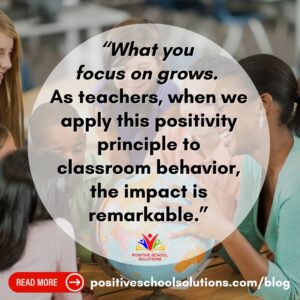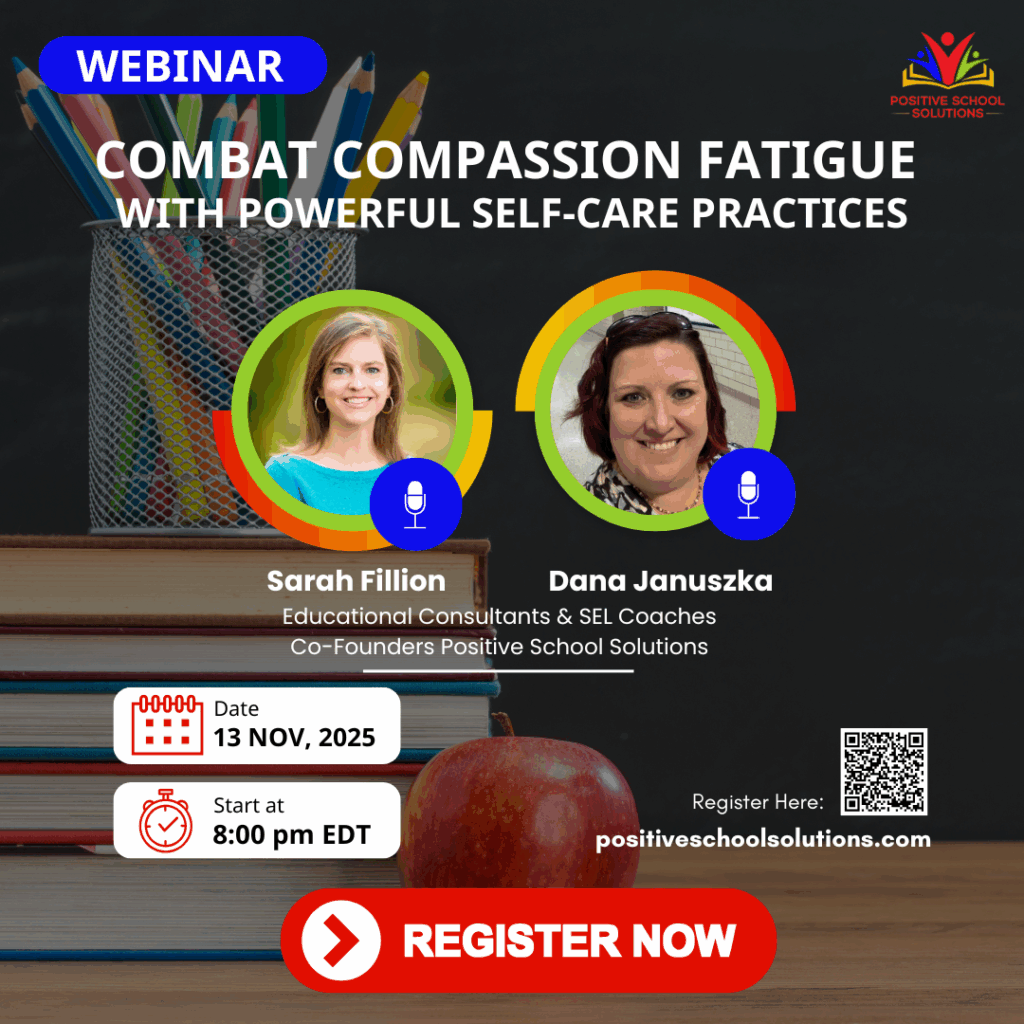There’s a simple yet powerful truth that can transform your classroom: what you focus on grows. As teachers, when we apply this positivity principle to classroom behavior, the impact is remarkable. Imagine pouring the same energy into recognizing and praising positive behavior as you do into correcting misbehavior. The result? Positive behaviors grow, your classroom climate thrives, and your outlook on teaching becomes brighter and more fulfilling.
A Lesson from the “Best Day Ever”
Think back to one of your best teaching days. For me, it was the day of our 5th Grade Explorers Fair. My students had researched historical explorers, dressed in character, and presented their findings to parents and classmates. The atmosphere was electric—students were on-task, confident, and positive, while visitors were genuinely impressed by their efforts and knowledge. That day, I had so many affirming, joyful interactions with my students. Over a decade later, it still makes me smile.
Reflecting on that day, I realize why it felt so special. It wasn’t just the event—it was the balance of positive reinforcement. I spent more time highlighting what students were doing right than correcting mistakes. When we shift our focus toward specific praise, it not only nurtures positive behavior but also rewires how we feel about the day.
Shifting the Balance: The Impact of Reinforcing Language
Consider this: if 70% of your language in the classroom is corrective (“Jamal, sit down.” “Ermione, we’re listening now.”), those negative moments dominate your perception of the day. On the other hand, if your day is filled with small moments of praise (“I see how focused you are on your writing, Jamal!” “Ermione, you carefully listened to your classmate’s idea!”), you’re likely to feel much more positive about your teaching.
This is where reinforcing language comes in. It’s the practice of giving students specific praise about their actions, behaviors, or efforts. And its power is undeniable.
A Kindergarten Example: Turning Good Behavior into Great
I’ll never forget working with a Kindergarten teacher whose class was practicing hallway transitions. After a successful walk to the gym, she said, “Kindergarteners, this was a great line! That’s exactly how we walk down the hallway!” The students beamed with pride.
Curious, I pulled aside three students and asked what made their line great. One mentioned the small spaces between them. Another proudly said they’d kept their hands off the walls. The third pointed out how silent they were. When I asked the teacher, she mentioned the group stopped at every checkpoint and stayed quiet.
By tweaking her reinforcing language on the way back, the teacher could highlight specific behaviors: “Wow! You stayed quiet, kept your hands to yourselves, and remembered to stop at each checkpoint. That’s exactly how we walk as a team!” This helped students understand what made their behavior great—and they were able to replicate it effortlessly in future transitions.
The Ingredients of Strong Reinforcing Language
Want to harness the power of reinforcing language in your own classroom? Here are five essential ingredients:
1. Be Specific.
Generic praise like “Good job!” feels nice but doesn’t give students clarity about what they did right. Instead, name the behavior:
-
- “You raised your hand and waited for me to call on you—that shows respect.”
-
- “Everyone transitioned quickly and quietly to your seats—thank you for your focus.”
2. Be Thoughtful.
Praise can be public or private, depending on the situation. For example:
-
- If you’re encouraging a student working on a specific goal, private praise might be more meaningful:
-
- “Kayla, I noticed you stayed in your seat for the whole reading block today. Great self-control!”
-
- If you’re encouraging a student working on a specific goal, private praise might be more meaningful:
-
- For whole-group praise, highlight the majority:
-
- “Wow, we worked together to clean up in under two minutes. That’s teamwork!”
-
- For whole-group praise, highlight the majority:
3. Convey Faith in Abilities.
Show students that you believe in their potential:
-
- “I knew you could solve that problem, and you stuck with it!”
-
- “This group is showing me how well they can collaborate—keep it up!”
4. Make It Relevant.
Reinforcing language should align with the behaviors you want students to repeat. This helps build habits and classroom norms.
You want to encourage a smooth start to the day, so you make your praise relevant to that goal:
-
- “I noticed everyone unpacked their materials quickly and got started on their morning work. That shows me you’re ready to make the most of our time together today!”
You want students to sustain focus during silent reading:
-
- “I see so many of you deeply engaged in your books—you’re growing as readers every time you focus like this.”
During a lab activity, you want students to focus on collaboration:
-
- “Your group shared materials without arguing and listened to each other’s ideas—that’s what scientists do when they work as a team!”
5. Balance Praise with Reflection.
Encourage students to reflect on their actions. This deepens their understanding and ownership of positive behaviors. For example:
-
- “You all kept the discussion focused and respectful—how did you make that happen?”
Language Swaps to Try
Here are some examples of how to elevate your reinforcing language:
| Instead of… | Try This… |
| “Good job following directions!” | “You followed directions right away, which helped us start on time!” |
| “Great teamwork!” | “Your group shared ideas and took turns speaking—that’s what made it work.” |
| “Nice transition!” | “You transitioned so quickly and quietly—you should feel proud of yourselves!” |
Examples for Key Moments:
-
- Transitions: “So many of you are transitioning quietly—thank you for helping us move smoothly to the next activity.”
-
- Independent Work: “I see focused faces and hear quiet thinking sounds—this shows you’re engaged.”
-
- Group Work: “I notice groups are using kind words and taking turns. That’s how we make collaboration successful!”
-
- End of Day: “Look at how organized the room is—it’s clear you’ve worked hard to tidy up before heading home.”
Ready to Learn More?
Ready to master Reinforcing Language and SPEAK intentionally with your students? Check out our on-demand course, where you’ll learn how to integrate these strategies into your daily routines. Let’s grow positivity in your classroom—together!
Written by Sarah Fillion 2024

